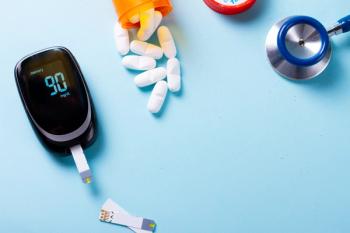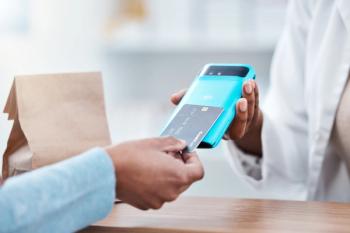
Automated Insulin Delivery System to Be Integrated with Glucose-Ketone Sensor
Insulin delivery technology company Sequel Med Tech announced its future partnership with Abbott’s glucose-ketone sensor, which is currently under development.
Sequel Med Tech announced a partnership Thursday that will integrate its twiist™ automated insulin delivery (AID) system with Abbott’s glucose-ketone sensor, according to a company news release.1 The future integration of AID and the glucose-ketone sensor—which is currently in development—will help patients enhance discovery of rising ketones and detect further risk of diabetic ketoacidosis.
“By integrating the twiist AID System with Abbott’s future glucose-ketone sensor, Sequel will be able to offer people with diabetes greater choice and the potential for improved outcomes in managing their care. twiist was designed to rapidly identify interruptions in insulin delivery, so combining this with early identification of rising ketones could help people living with diabetes react more quickly and more confidently,” said Sequel CEO and Co-Founder Alan Lotvin, MD, according to the release.
This new partnership is notable because of Sequel Med Tech’s interest in integrating their technology with a device that hasn’t yet been approved for patient use. With this proactive approach, teaming up with Abbott will allow for Sequel’s technology to stand above the rest in the insulin delivery space.
While neither of these products have gone to market as of now, the companies are promising a future where patients’ management of diabetes has never been easier.
READ MORE:
“This marks an expansion on the integration of technologies between the 2 companies, as Sequel announced in March that it agreed with Abbott to make the Libre system its first continuous glucose monitor (CGM) integration for twiist,” wrote Sean Whooley for MassDevice.2 “Manchester, New Hampshire-based Sequel expects to launch the combination in the second quarter of 2025.”
While the twiist device will be available to patients with diabetes in a matter of time, there is no definite timetable for the approval of Abbott’s glucose-ketone sensor. However, despite the necessary wait before rolling out a new device that performs both functions, Sequel is getting ahead of its future product development.
The main goal of this partnership is to make patients’ diabetes management more convenient. More specifically, it was designed to expand patients’ real-time knowledge of their diabetic measurements. With a regularly updated view of their ketones, patients will have a much better grasp on their potential for experiencing ketoacidosis.
“People living with type 1 diabetes [T1D] who use twiist will be able to select from compatible CGM systems, including Abbott’s FreeStyle Libre® 3 Plus sensor and, in the future, the Senseonics Eversense 365 to best suit their individual needs for managing diabetes,” continued authors of the release.1 “Abbott’s glucose-ketone sensor will be added in the future once the product is cleared for use and available in the US.”
Upon their approval for efficacy and safety, these products have potential to improve nationwide outcomes regarding patients with T1D. According to the CDC, over 300,000 US children under 20 have T1D. Even more notable, at least 1.5 million adults, or 5.7% of all adults with diabetes, have both reported T1D and regularly use insulin.3
With the future partnership between Sequel and Abbott, each company is teaming up with the other to truly make a population-wide impact on T1D care.
“Cleared for people ages 6 and up with T1D, the twiist AID System offers the capability and flexibility to address each person’s individual dosing needs,” they wrote.1 “The twiist Loop algorithm, based on Tidepool Loop, an intuitive and smart technology designed by people with diabetes for people with diabetes, allows the system to automatically adjust basal insulin delivery based on real-time sensor readings and predicted glucose levels.”
While this future partnership—barring any unforeseen breaks in agreement—is a win for patients with T1D, it may be an event that causes other health care technology companies to act. As companies like Sequel and Abbott continue to bring state-of-the-art, life-saving equipment to market, other companies may be unknowingly in the works of creating something even better or bigger.
“Through this collaboration, we are redefining what people living with diabetes can expect from an AID system,” concluded Lotvin, Sequel’s CEO.1
READ MORE:
Pharmacy practice is always changing. Stay ahead of the curve: Sign up for our
References
1. Sequel Med Tech to integrate twiist automated insulin delivery (AID) system with Abbott’s future dual glucose-ketone sensor. News Release. Sequel Med Tech. May 22, 2025. Accessed May 22, 2025. https://www.globenewswire.com/news-release/2025/05/22/3086535/0/en/Sequel-Med-Tech-to-Integrate-twiist-Automated-Insulin-Delivery-AID-System-with-Abbott-s-Future-Dual-Glucose-Ketone-Sensor.html
2. Whooley S. Sequel Med Tech to pair automated insulin delivery system with Abbott’s future dual glucose-ketone sensor. MassDevice. May 22, 2025. Accessed May 22, 2025. https://www.massdevice.com/sequel-medtech-twiist-abbott-dual-sensor/
3. National diabetes statistics report. CDC. May 15, 2024. Accessed May 22, 2025. https://www.cdc.gov/diabetes/php/data-research/
Newsletter
Pharmacy practice is always changing. Stay ahead of the curve with the Drug Topics newsletter and get the latest drug information, industry trends, and patient care tips.






































































































































